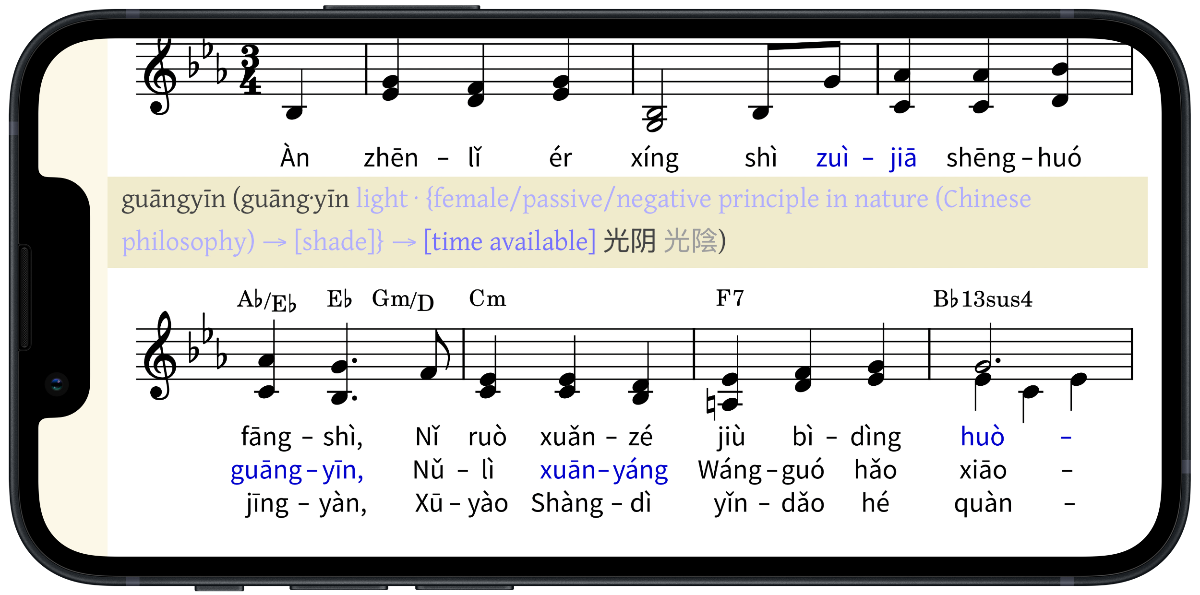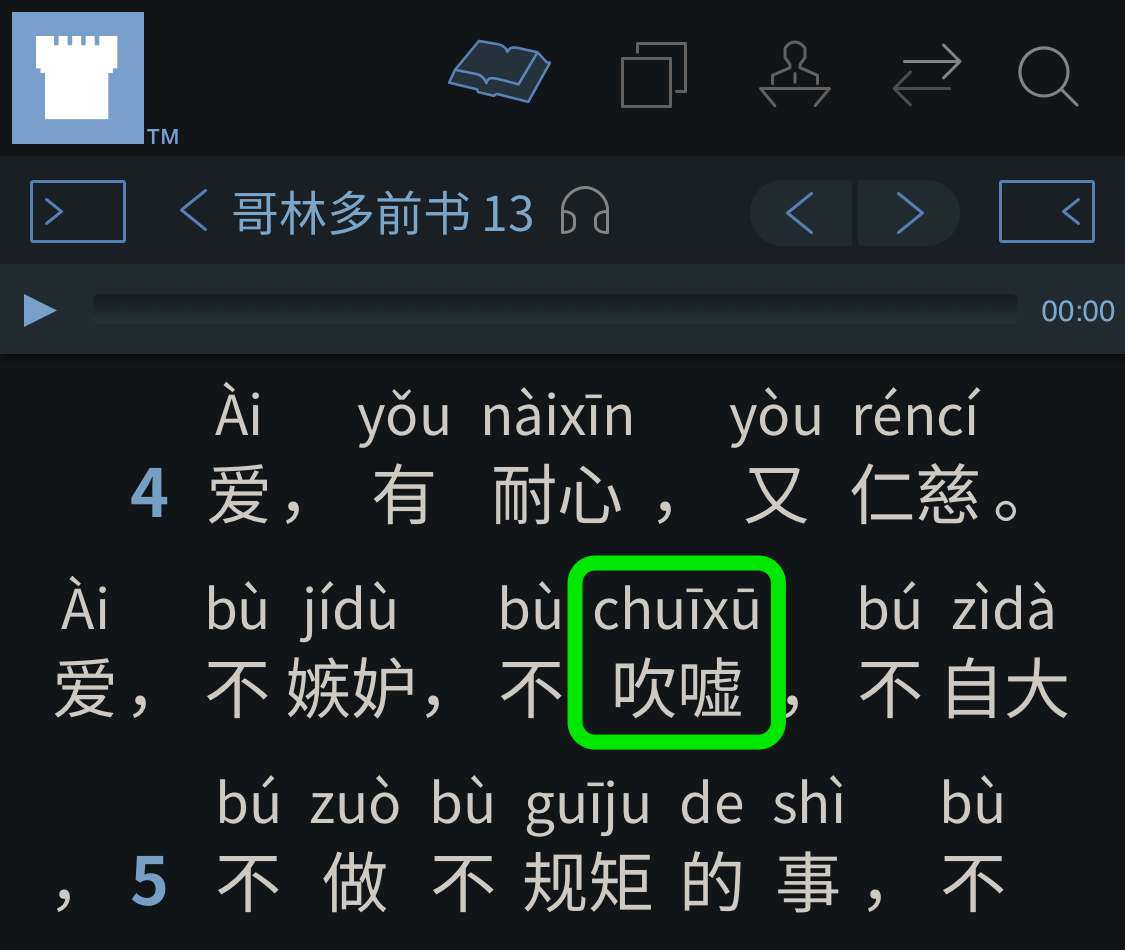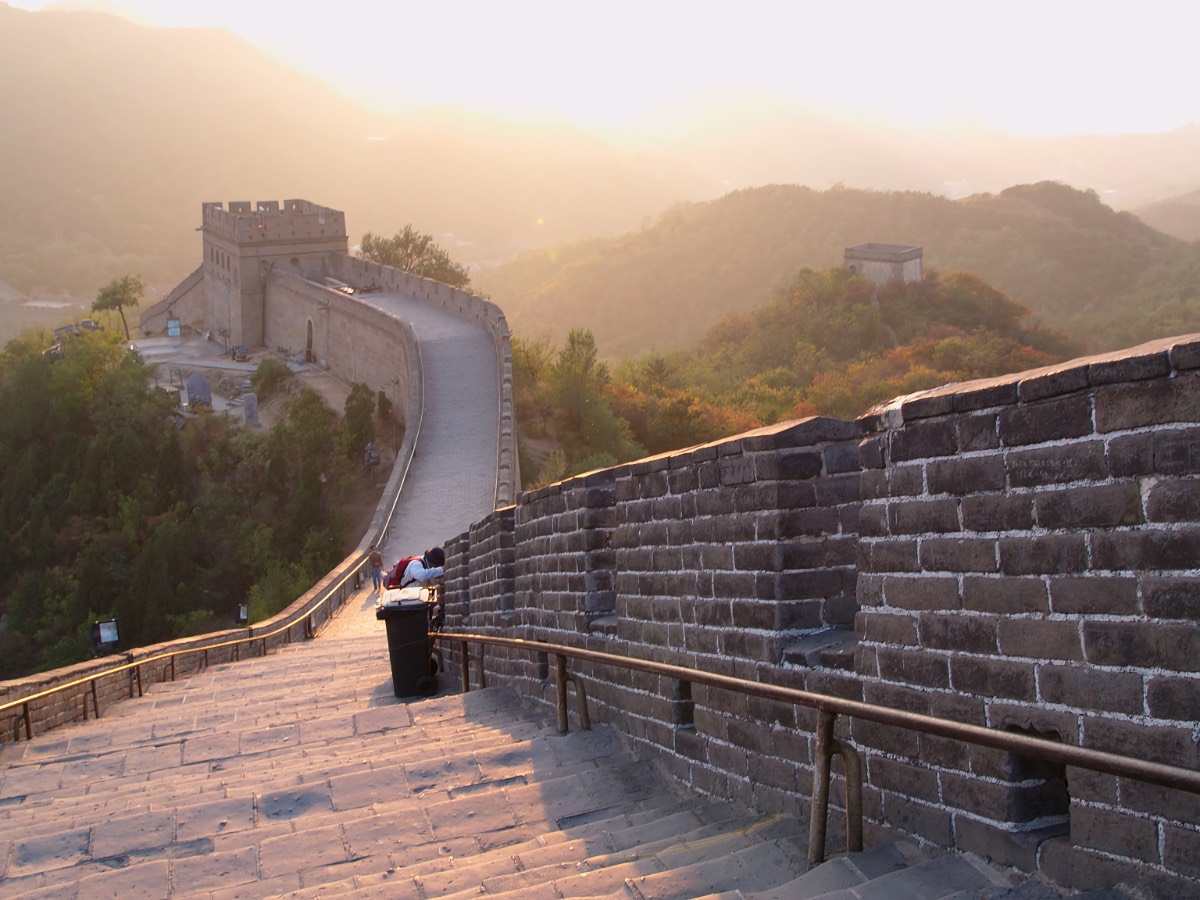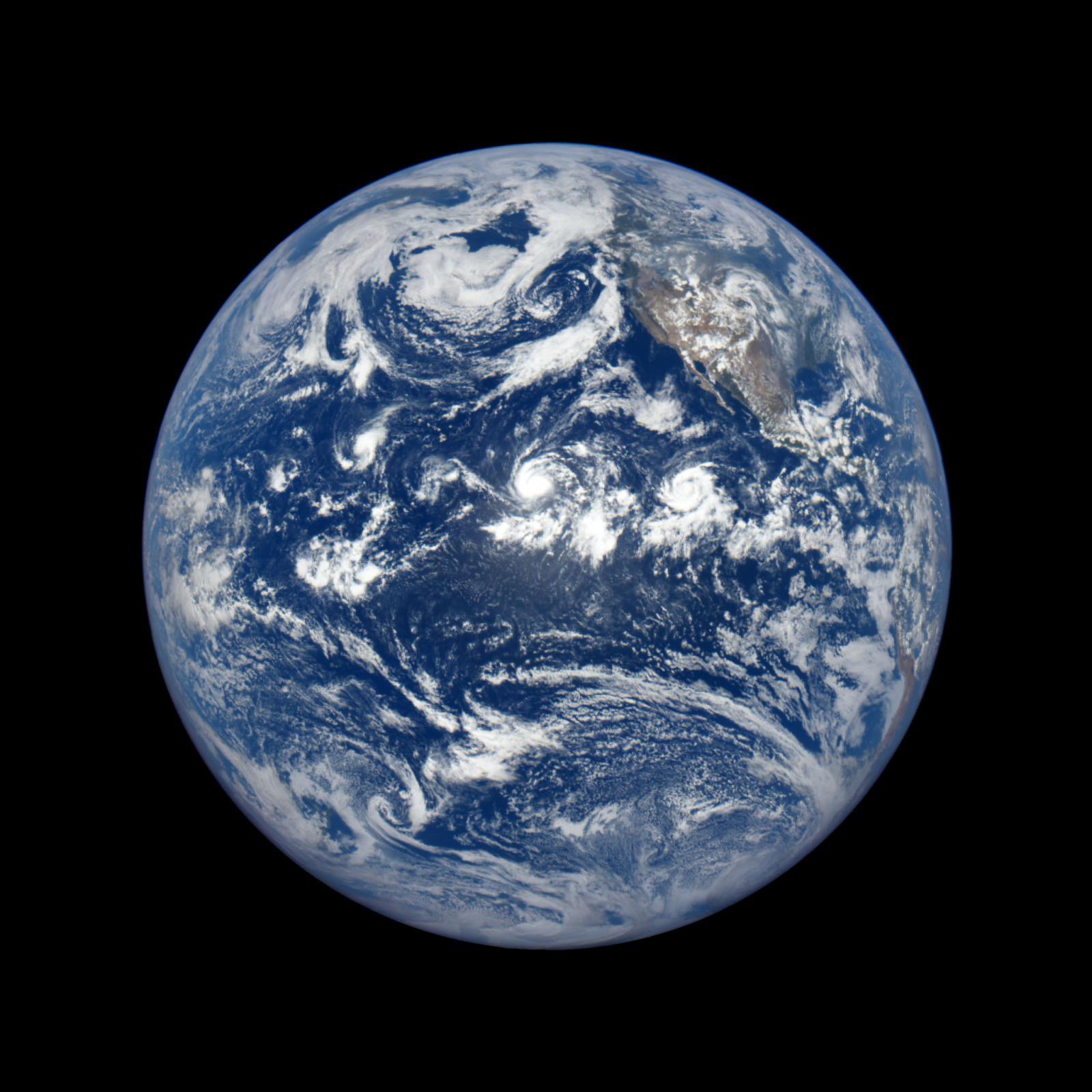guāngyīn (guāng·yīn light · {female/passive/negative principle in nature (Chinese philosophy) → [shade]} → [time [available]] 光阴 光陰) ← Tap/click to show/hide the “flashcard”
[Notes: Tap/click on a Pīnyīn (Pīn·yīn {Piecing Together of} · Sounds → [Pinyin] 拼音) expression to reveal its “flashcard”; tap/click on a “flashcard” or its Pīnyīn (Pīn·yīn {Piecing Together of} · Sounds → [Pinyin] 拼音) expression to hide the “flashcard”. 📖 📄 📘 icons mean 📖 Reveal All, 📄 Reveal Advanced, and 📘 Reveal None re all the “flashcards” in the heading, paragraph, etc. that they are placed at the beginning of.]
Rather than dismissively thinking to ourselves that the songs produced by the organization are “just songs”, we should remember that the slave class takes seriously its responsibility to provide spiritual food to God’s people, and so it is going to make sure that the lyrics in its songs are spiritually correct, while also being emotionally moving.—Ezekiel 33:32; Matthew 24:45.
Light and Shade
This week’s MEotW, “guāngyīn (guāng·yīn light · {female/passive/negative principle in nature (Chinese philosophy) → [shade]} → [time [available]] 光阴 光陰)”, comes from the second verse of song 56, which is entitled “Make the Truth Your Own” in English and “Jiāng (Take 将 將) Zhēnlǐ (Zhēn·lǐ True · Reasoning → [the Truth] 真理) Zhēncáng (Zhēn·cáng {to Be Treasured} · {to Be Stored Up} 珍藏) zài (in 在) Xīnli (Xīn·li Heart · Inside 心里 心裡/裏)” in Mandarin:
The effort you make and the time you are spending
In service to God and his Kingdom
Mandarin (WOL, Pīnyīn (Pīn·yīn {Piecing Together of} · Sounds → [Pinyin] 拼音) Plus):
📖 📄 📘 Nǐ (you 你) bù (not 不)‐cí ({do take your leave from} → [do shrink from] 辞 辭/辤)‐xīnláo (xīn·láo {pungently → [labouriously]} · working 辛劳 辛勞), jìn ({expend to the limit} 尽 盡) quánlì (quán·lì whole · strength 全力) shànyòng (shàn·yòng {(for) good} · {to be using} 善用) guāngyīn (guāng·yīn light · {female/passive/negative principle in nature (Chinese philosophy) → [shade]} → [time available] 光阴 光陰),
Nǔlì (Nǔ·lì exert · strength 努力) xuānyáng (xuān·yáng {to declare} · {to raise → [to make known]} 宣扬 宣揚) Wángguó (Wáng·guó King’s · Nation → [Kingdom] 王国 王國) hǎo (good 好) xiāoxi (xiāo·xi disappearing · news → [news] 消息).
Yin and Yang
While “guāng (light | {[is] bare}; {[is] naked} | {[is] used up} | only 光)” is a well-known Mandarin expression that means “light”, the situation with the other morpheme in this week’s MEotW is a little more complicated. “Yīn ({female/passive/negative principle in nature (Chinese philosophy)} [→ [the moon | covert; concealed; hidden; secret | implicit | negative (electric charge) | [is] overcast; dull; gloomy | shade | [is] sinister; treacherous | of the netherworld | genitalia] 阴 陰/隂)” is now used to effectively mean such common, everyday things as “overcast”, “shade”, or “negative (electric charge, etc.)”, but the meaning of “yīn ({female/passive/negative principle in nature (Chinese philosophy)} [→ [the moon | covert; concealed; hidden; secret | implicit | negative (electric charge) | [is] overcast; dull; gloomy | shade | [is] sinister; treacherous | of the netherworld | genitalia] 阴 陰/隂)” originally comes from Chinese philosophy—it’s the “yīn ({female/passive/negative principle in nature (Chinese philosophy)} [→ [the moon | covert; concealed; hidden; secret | implicit | negative (electric charge) | [is] overcast; dull; gloomy | shade | [is] sinister; treacherous | of the netherworld | genitalia] 阴 陰/隂)” in “yīnyáng (yīn·yáng {female/passive/negative principle in nature (Chinese philosophy)} · {positive/active/male principle in nature (Chinese philosophy)} [→ [yin and yang; opposites]] 阴阳 陰陽)” (Wikipedia article).
The “yáng ({positive/active/male principle in nature (Chinese philosophy)} [→ [sun | solar | open; overt | belonging to this world | positive (electric charge) | male]] 阳 陽)” in “yīnyáng (yīn·yáng {female/passive/negative principle in nature (Chinese philosophy)} · {positive/active/male principle in nature (Chinese philosophy)} [→ [yin and yang; opposites]] 阴阳 陰陽)” also appears in “tàiyáng (tài·yáng highest · {positive/active/male principle in nature (Chinese philosophy)} → [sun] 太阳 太陽)”, the Mandarin word for “sun”. The examples of this week’s MEotW and of “tàiyáng (tài·yáng highest · {positive/active/male principle in nature (Chinese philosophy)} → [sun] 太阳 太陽)” show us how much Chinese philosophy is woven through the Chinese languages like Mandarin, to the extent that it may be practically impossible to completely avoid using in everyday speech words with allusions to Chinese philosophy. Of course, we know that Chinese philosophy as a whole, having originated with mere humans, is inevitably going to clash at least in some ways with God’s truth, but in this linguistic situation, in which people in general hardly ever think of the connections to Chinese philosophy that some everyday Mandarin words have, the organization has decided that it’s acceptable, or at least tolerable, to use a word like “guāngyīn (guāng·yīn light · {female/passive/negative principle in nature (Chinese philosophy) → [shade]} → [time [available]] 光阴 光陰)” in the lyrics of one of its songs.
A Distracting “Easter Egg”
In one of those cute “easter egg”-type indulgences connecting visual design with meaning that many seem to enjoy, the Simplified characters for “yīnyáng (yīn·yáng {female/passive/negative principle in nature (Chinese philosophy)} · {positive/active/male principle in nature (Chinese philosophy)} [→ [yin and yang; opposites]] 阴阳 陰陽)”, “阴阳”, employ the radicals/character components representing the moon (月) and the sun (日) respectively. This relates to “yīn ({female/passive/negative principle in nature (Chinese philosophy)} [→ [the moon | covert; concealed; hidden; secret | implicit | negative (electric charge) | [is] overcast; dull; gloomy | shade | [is] sinister; treacherous | of the netherworld | genitalia] 阴 陰/隂)” literally meaning “female/passive/negative principle in nature (Chinese philosophy)” and sometimes being used to mean “moon”, and “yáng ({positive/active/male principle in nature (Chinese philosophy)} [→ [sun | solar | open; overt | belonging to this world | positive (electric charge) | male]] 阳 陽)” literally meaning “positive/active/male principle in nature (Chinese philosophy)” and sometimes being used to mean “sun”.
To try to be the adult in the room, though, here I need to remind everyone that the way Jehovah created us, the primary focus of human language involves using invisible speech—not visible visual elements—to directly represent meaning. As linguists hold, speech is primary, and writing is secondary. Cute “easter egg”-type indulgences involving the visual designs of some characters may be delightful to some on a mental, “that’s clever” level, but unfortunately, they can and do distract people from the basic linguistic truth that speech is primary, similarly to how visible idols distract people from the basic truth that God is actually a powerful but invisible Spirit, not a physical statue or image.—1 Corinthians 14:8–11.
The Time Available
Anyway, on one level of literalness, “guāngyīn (guāng·yīn light · {female/passive/negative principle in nature (Chinese philosophy) → [shade]} → [time [available]] 光阴 光陰)” means “light-shade”. This apparently refers to the alternating lightenings and darkenings of the skies as each day—along with its time—passes. The result is that “guāngyīn (guāng·yīn light · {female/passive/negative principle in nature (Chinese philosophy) → [shade]} → [time [available]] 光阴 光陰)” is used to effectively mean “time”, or “time available”. (This may be an echo of the truth spoken of at Genesis 1:14, that God set up “luminaries in the expanse of the heavens” to “serve as signs for seasons and for days and years”.) Regardless of the origin of part of “guāngyīn (guāng·yīn light · {female/passive/negative principle in nature (Chinese philosophy) → [shade]} → [time [available]] 光阴 光陰)”, let us be determined to spend well in God’s service whatever time we have available to us. We should especially be careful to do so, since, as dedicated ones, our limited time belongs, not just to ourselves, but to Jehovah.—1 Corinthians 10:31.
In this regard, one thing that we should especially keep in mind as Mandarin field language learners is that the unnecessary, self-indulgent complexities and vagaries of Chinese characters can use up much of our precious available time—which, for us dedicated ones, belongs to Jehovah—if we allow them to. With the above-mentioned linguistic and scriptural information in mind, make sure to only spend whatever time is necessary to spend on Chinese characters, which originated with mere humans and which are imposed merely by tradition. (Hebrews 12:1) Let us focus instead on cultivating God’s gift of speech in the Mandarin field, perhaps with the assistance of the modern, elegant, and efficient Pīnyīn (Pīn·yīn {Piecing Together of} · Sounds → [Pinyin] 拼音) writing system.
SVG Technology and Lyrics Links

In the unofficial “Sing Out Joyfully” Bk. (Pīnyīn+Music, Pīnyīn Plus, Web) language-learning resource, some songs now use SVG technology to enable links (rendered in blue) in the musical notation’s Pīnyīn (Pīn·yīn {Piecing Together of} · Sounds → [Pinyin] 拼音) lyrics. When tapped/clicked, these will display Pīnyīn (Pīn·yīn {Piecing Together of} · Sounds → [Pinyin] 拼音) Plus “flashcards”. For example, as shown above, this resource’s rendition of song 56, from which this week’s MEotW comes, uses this technology. More such links will gradually be added as time allows.
In the _“Sing Out Joyfully” (sjj)_ _Pīnyīn_ Plus web resource, song 56 is the first one to use SVG technology to:
1. Maintain sharp rendering of the musical notation material even on larger displays.
2. Provide precise, consistent links that display _Pīnyīn_ Plus information. pic.twitter.com/oDbbJ3VZxx
— tiandi, Links News (@TiandiLinksNews) August 31, 2024
For convenience:
The direct link for the Pīnyīn (Pīn·yīn {Piecing Together of} · Sounds → [Pinyin] 拼音) Plus resource for the “Sing Out Joyfully” book is:
The short link for Chinese field language-learning links for the “Sing Out Joyfully” book is:
More Pīnyīn (Pīn·yīn {Piecing Together of} · Sounds → [Pinyin] 拼音) and Pīnyīn (Pīn·yīn {Piecing Together of} · Sounds → [Pinyin] 拼音) Plus web material based on the Mandarin “Sing Out Joyfully” book will be made available in the Pīnyīn (Pīn·yīn {Piecing Together of} · Sounds → [Pinyin] 拼音) Plus web resource as time allows.


